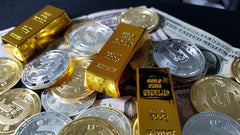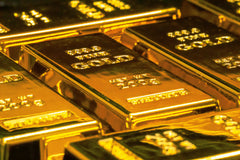What is Driving Silver Demand?
Silver’s price reached a point never seen since 2012 in 2024. Despite Australia being the world’s sixth-largest silver producer, there is an ongoing deficit in silver supply for Australian investors.

The International Precious Metals Institute recorded 2024 as the fourth consecutive year where silver demand outstripped supply, with a shortfall of around 182 million ounces. Looking ahead, analysts forecast that the silver price could reach AUD 60.87 - AUD 68.88 in 2025.
You may ask: What is driving silver demand in Australia?
Silver is a precious metal with versatile applications. In this blog post, I will show you the primary factors influencing silver's demand and why investors should prioritise it as an asset.
Factors Affecting Silver’s Demand
Here are four primary factors affecting silver’s demand:
1. Industrial Powerhouse
Silver's electrical conductivity and physical properties make it indispensable in various industrial applications. Unsurprisingly, industrial applications account for 55% of the global silver demand.
According to the World Silver Survey, the industrial sector reached a record silver demand in 2022, rising 11% to 654.4 million ounces.
Moving forward, it increased to 655 million ounces in 2023 and surpassed 700 million ounces for the first time in 2024. The Silver Institute cites the green economy applications, especially the photovoltaic (PV) sector, as a crucial factor behind this increase.
Silver's conductivity makes it an essential element for solar cell production. It is used in photovoltaic panels as conductive inks to capture and convert sunlight into electricity.
Recent reports show a 64% increase in silver demand for photovoltaic cell production in 2023 over 2022. This demand increased due to the accelerated global adoption of renewable energy.
Looking ahead, forecasts for 2025 predict the solar sector will consume over 8,000 metric tons of silver annually, equivalent to a 50% increase from current levels. Government policies supporting green energy fuel this growth, particularly in Australia, where solar energy now powers 36.05% of homes.
Of course, silver has other industrial uses besides solar panels. These include electric vehicles, electronics, nuclear reactors, brazing alloys, and solders.
Electric Vehicles
Silver’s electrical properties, oxide resistance, and durability in harsh environments make it a dependable element for automakers.
Silver powers electrical control units in vehicles that manage navigation, power steering, infotainment, and safety systems such as airbags and automatic braking.
Recent studies show diversity in silver demand per vehicle; internal combustion engine vehicles use 15-28 grams of silver, while hybrid cars use 18-34 grams. Battery electric vehicles (BEVs), at the forefront of the EV revolution, consume 25-50 grams per vehicle.
The Silver Institute projects a 90 million ounces annual demand for silver in the automotive industry by 2025 as more nations accept the BEV-friendly policies and silver demand for ancillary services like charging stations for electric vehicles increases. In fact, data from Statista shows that the unit sales of the electric vehicle market in Australia could reach 119.16 thousand cars in 2026.

Electronics and Emerging Technologies
Silver’s high electrical conductivity and corrosion resistance make it a natural choice for printed circuit boards, television screens, radio frequency identification antennas, and virtually all electronic devices with on/off buttons.
The electrical and electronics sectors recorded a 20% growth to 445.1 million ounces in silver demand in 2022.
In 2024, the sector used 485.6 million ounces of silver for components such as semiconductors, touchscreens, power grid construction, advanced medical equipment, and more.
Most importantly, emerging technologies, including 5G infrastructure and Internet of Things (IoT) devices, are expected to drive further demand. By 2025, electronics and technology applications will account for nearly 60% of industrial silver usage as innovative technologies become more integrated into daily life.
Brazing Alloys and Solders
Aerospace and manufacturing industries rely heavily on silver-based brazing alloys for components that require high-strength connections, such as jet engines and fuel systems. You can also use silver solders to join intricate semiconductor circuits and other sensitive devices.
Nuclear Reactors
Silver is a primary control rod component in nuclear reactor production. Its thermal conductivity and corrosion resistance suit various reactor components exposed to high temperatures and radiation. Silver is also used in electrical connections within reactors and specific shielding applications to protect sensitive equipment from radiation.
2. Precious Metal Investment
Silver maintains its status as a valuable investment asset:
Silver as a Store of Value
Silver is a reliable store of value and a hedge against inflation and currency devaluation. Despite the world's economic slowdown, global physical investment in silver, including coins and bars, reached 243.1 million ounces in 2023 and 212 million ounces in 2024.

Although Australia was one of the countries that experienced a buying drop in silver investment demand in 2024, even so, the market demand still represents the fourth highest on record.
Silver's affordability compared to gold makes it accessible to investors, while its intrinsic value provides stability during economic uncertainty.
Further reading: Silver Investing for Beginners: A Comprehensive Guide to Diversifying Your Portfolio
Market Dynamics
Macroeconomic trends, currency fluctuations, cryptocurrency competition, and investor sentiment heavily influence silver investment markets.
For instance, investors gravitate toward silver as a hedge against inflation and a safe-haven asset during economic uncertainty. In 2024, this trend was evident as silver remained a preferred choice for portfolio diversification, supported by physical investment demand, which reached 212 million ounces.
Also, silver attracted long-term investors seeking higher returns due to the 85:1 gold-to-silver price ratio.
Supply Constraints
An asset becomes sought-after when supply is less-than-bar, and there’s a high demand from different angles. This same scenario plays out for silver’s demand-to-supply ratio.
Data from Silver Institute shows a 2% increase in silver supply in 2024. Mine production increased from 829 to 837 million ounces in 2024.
Recycling, which supplements supply, has plateaued at around 187 million ounces, failing to offset growing demand.
However, the global silver supply of 1.004 billion ounces has yet to match the growing global silver demand, currently at 1.219 billion ounces. These supply constraints and the high demand for silver in industrial applications, jewelry, and investments will sustain its value as a sought-after asset.
3. Photography
The evolution of digital technology reduced the demand for silver in photographic applications. 2023 recorded the lowest demand at 27 million ounces, with a 3% decline forecast for 2024. However, silver remains a vital element for X-ray imaging and fine art photography thanks to its light-sensitive properties.
4. Jewelry
Jewelry comes to mind when anyone mentions silver. Its unique elegance and affordability make the white metal a household item in jewelry collections worldwide.
In 2022, silver demand for jewelry crossed an all-time record of 234.5 million ounces. Although the expected demand in 2024 dropped to 211.3 million ounces, silver’s high reflectivity and brilliant polish retain its high demand among artisans and fashion moguls. More so, unlike gold, silver’s lower cost makes it accessible across several income groups.
5. Silverware
Silver has a luster, is malleable, and is resistant to tarnish. These qualities make it ideal for creating high-end tableware, such as cutlery, trays, and decorative items.
The cultural significance of silverware in traditional ceremonies and its perception as a symbol of wealth makes the demand for the metal reach new levels yearly in the silverware industry.
Like silver jewelry, the demand for silver in the silverware industry set a new record of 73.5 million ounces in 2022. There was a drop in demand in 2023, but the expected demand for 2024 will be 7% higher than in 2023.
Conclusion
Silver is in high demand in various applications, from industry to jewelry to investment. Its high demand and limited supply create a clear opportunity to diversify your portfolio and invest for long-term returns.
Ready to invest in silver? Check our extensive range of investment-grade silver products.


